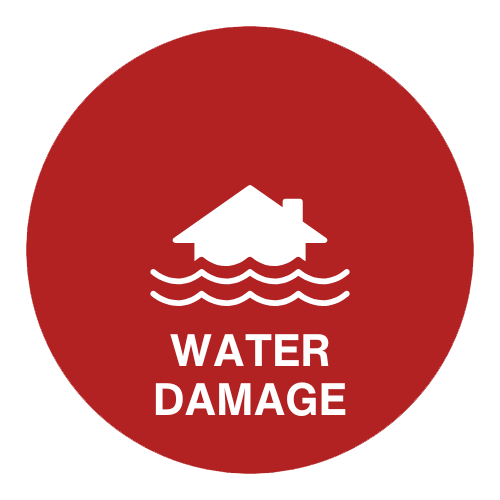Reconstruction and repair after water damage is a crucial process to restore a property to its pre-damaged condition. Whether the damage is caused by a flood, leak, or other water-related issues, prompt and effective action is essential. Below is a general guide on the steps involved in the water damage restoration process. Your project may not require all of these steps; Disaster America’s trained professionals will evaluate each property and provide you with our plan to best address your needs.
We begin by assessing the extent of the water damage, identifying the affected areas, and documenting the damage for insurance purposes. If required, we’ll take photos and make a detailed inventory of damaged items and structural components.
The next step is usually to remove standing water using pumps or wet vacuums. Then we place dehumidifiers and industrial fans to dry out the affected areas. This helps prevent mold growth and further structural damage.
Checking for mold growth is next if indicated. Mold growth can begin within 24-48 hours after water damage. If mold is present, we’ll remove any visible mold and use appropriate cleaning agents to prevent its return.
Depending on the extent of the damage, it may be necessary to assess the structural integrity of the building. We can repair or replace damaged walls, floors, ceilings, and other structural elements if they have been compromised. We can also ensure that the electrical and plumbing systems are inspected and repaired by qualified professionals.
Where there are materials that cannot be salvaged, we can remove and replace them, such as drywall, insulation, and flooring. Where possible, we will recommend upgrading materials to those more resistant to water damage.
We can inspect and, if necessary, repair or replace electrical systems that may have been damaged by water. This may include checking and cleaning HVAC systems to prevent the spread of contaminants.
Where structural repairs are indicated, we’ll repaint or refinish surfaces as needed. We recommend mold-resistant pain in areas prone to moisture.
Wherever possible, we’ll implement measures to prevent future water damage. This may involve fixing leaks, improving drainage, or reinforcing vulnerable areas.
When the work is finished, we prefer to conduct a final inspection to ensure that all repairs have been completed satisfactorily. This can include verifying that the property meets local building codes and regulations.
For most projects, we submit all necessary documentation to your insurance provider to facilitate the claims process.
Reconstruction and repair after water damage is a crucial process to restore a property to its pre-damaged condition. Whether the damage is caused by a flood, leak, or other water-related issues, prompt and effective action is essential. Below is a general guide on the steps involved in the water damage restoration process. Your project may not require all of these steps; Disaster America’s trained professionals will evaluate each property and provide you with our plan to best address your needs.
We begin by assessing the extent of the water damage, identifying the affected areas, and documenting the damage for insurance purposes. If required, we’ll take photos and make a detailed inventory of damaged items and structural components.
The next step is usually to remove standing water using pumps or wet vacuums. Then we place dehumidifiers and industrial fans to dry out the affected areas. This helps prevent mold growth and further structural damage.
Checking for mold growth is next if indicated. Mold growth can begin within 24-48 hours after water damage. If mold is present, we’ll remove any visible mold and use appropriate cleaning agents to prevent its return.
Depending on the extent of the damage, it may be necessary to assess the structural integrity of the building. We can repair or replace damaged walls, floors, ceilings, and other structural elements if they have been compromised. We can also ensure that the electrical and plumbing systems are inspected and repaired by qualified professionals.
Where there are materials that cannot be salvaged, we can remove and replace them, such as drywall, insulation, and flooring. Where possible, we will recommend upgrading materials to those more resistant to water damage.
We can inspect and, if necessary, repair or replace electrical systems that may have been damaged by water. This may include checking and cleaning HVAC systems to prevent the spread of contaminants.
Where structural repairs are indicated, we’ll repaint or refinish surfaces as needed. We recommend mold-resistant pain in areas prone to moisture.
Wherever possible, we’ll implement measures to prevent future water damage. This may involve fixing leaks, improving drainage, or reinforcing vulnerable areas.
When the work is finished, we prefer to conduct a final inspection to ensure that all repairs have been completed satisfactorily. This can include verifying that the property meets local building codes and regulations.
For most projects, we submit all necessary documentation to your insurance provider to facilitate the claims process.
It’s important to note that water damage restoration can be complex, and hiring professionals experienced in this field is often advisable to ensure a thorough and effective recovery process. Additionally, addressing water damage promptly can help minimize the extent of the damage and reduce the overall cost of restoration. Disaster America is your resource for experienced water damage professionals and a plan to address your specific water damage restoration needs.
Contact us using the form below!



